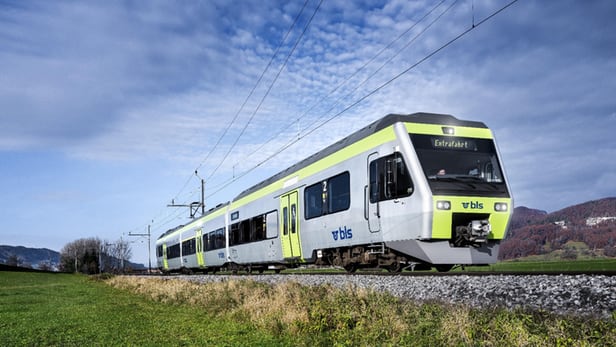Trains are often not the best place to use your smartphones, particularly since many cars offer reception similar to an elevator. As a solution, a team of researchers at the École Polytechnique Fédérale de Lausanne (EPFL) created train windows made of a laser-treated glass that offer the same insulating properties as standard passenger cars, but do not interfere with mobile reception.

According to EPFL, a third of the energy used by a train heats or cools passenger cars, with approximately 3% of this escaping through the windows. To assist in insulating the cars, the double-glazed windows are equipped with an ultra-thin metal coating that allows light in, but reflects heat away. As a result, the interior of the car maintains its desired temperature using minimal energy. These coated windows have four times the energy efficiency than traditional, untreated windows.
However, the coating not only reflects heat, but also blocks telecommunication signals. And since railways are made out of metal, the coating in the windows turns them into earthed metal screens that enclose a space to cut it off from electromagnetic radiation. But, in turn, passenger cars have poor phone reception.
A standard solution to this problem would be to equip the cars with electronic boosters and repeaters. However, this means using more energy, as well as more money on installation and maintenance. The researchers’ alternative is to alter the metal coating to make windows more selective regarding what it allows to pass through.
The new design takes advantage of the fact that electromagnetic waves of mobile phones — which are centimetric in size — are different to heat waves (micrometric in size), which are again different to light waves (nanometric in size). The team used a high-precision laser to remove approximately 2.5% of the metal coating and then engraved a special pattern into the surface. The pattern is invisible to the naked eye but allows electromagnetic and light waves to pass through while still blocking the heat waves and not affecting insulation.
The prototypes tested have proven successful and Bern–Lötschberg–Simplon railway (BLS) in Switzerland has installed the windows on a self-propelled regional train for field testing. The results demonstrated that the new windows are as transparent to phone reception as plain windows, and BLS plans to expand installation to most of its 36 trains starting in September.
Additionally, EPFL forecasts that the new windows could be used in applications beyond just trains.
“As the Internet of Things continues to grow, there is a real interest in improving the properties of building materials that allow mobile signals through. More broadly, by making materials more frequency-selective, we could, for example, imagine a building that lets electromagnetic waves through but blocks Wi-Fi waves, thus enhancing corporate security,” said Andreas Schüler, from EPFL's Nanotechnology for Solar Energy Conversion Group.
Source: New Atlas
Advertisement
Learn more about Electronic Products Magazine





